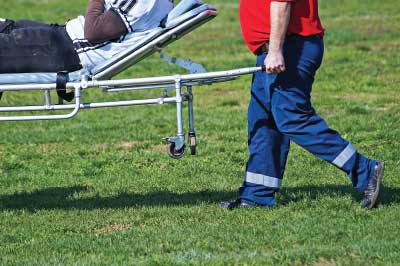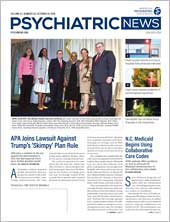A Danish retrospective study of more than 34,000 people who died from suicide found that the suicide rate was nearly double among those diagnosed with traumatic brain injury (TBI) compared with those without a TBI diagnosis.
The study was conducted by psychiatric epidemiologist Trine Madsen, Ph.D., and colleagues including psychiatrist Michael Benros, M.D., Ph.D. The authors are affiliated with the Danish Research Institute of Suicide Prevention and Copenhagen University Hospital in Denmark. Benros is a senior researcher and clinician with expertise in psychiatric epidemiology.
In total, the researchers assessed data on more than 7.4 million people aged 10 and older living in Denmark from 1980 to 2014. During this period, approximately 7.6 percent—nearly 568,000 people—had a medical contact for TBI. Among those with TBI, the suicide rate was 41 per 100,000 versus 20 per 100,000 for those without a TBI diagnosis.
Although the incidence of post-TBI suicide was only a fraction of the total number of people who experienced TBI—0.62 percent—any factor that increases suicide risk warrants concern, commented Jennifer Coughlin, M.D., an assistant professor of psychiatry at Johns Hopkins School of Medicine. She has studied the impact of concussions on National Football League athletes using neuroimaging to evaluate the molecular changes that follow brain trauma. She noted that the study finding are consistent with prior findings.
“We need to be asking our patients about history of TBI, and for those who report TBI, we need to ask about psychiatric symptoms and suicidal ideation,” Coughlin said. “These data suggest that the impact of that practice alone may be lifesaving.”
The researchers also found that the more severe the TBI, the greater the risk of suicide, and that suicide risk was most elevated in the six months following initial medical contact for TBI. This suggests that both patients and clinicians need to be particularly focused on treatment during this critical period, said Benros.
Regarding treatment, Benros said, the evidence supporting an approach specifically for post-TBI psychiatric disorders is inadequate. The absence of treatment details and the absence of data on the particular psychiatric disorders that were associated with TBI were among the study’s key limitations and represent critical areas for further research, he said.
There was one paradoxical finding—in those with a pre-TBI history of either a psychiatric diagnosis or deliberate self-harm, TBI was associated with a lower risk of suicide than among those who had only a psychiatric diagnosis or had engaged in deliberate self-harm.
“That finding emphasizes what we [already know]—that psychiatric illness and deliberate self-harm are the main risk factors for suicide,” said Benros. It is possible that because risk in this subpopulation is already so elevated, there may be “a ceiling effect,” he noted, and it is also possible that increased medical attention after TBI may be a protective factor for those with pre-TBI psychiatric diagnosis and history of self-harm.
Jonathan Silver, M.D., is a clinical professor in the NYU School of Medicine Department of Psychiatry and the lead author of an article in the journal Brain Injury on the association between head injuries and psychiatric disorders.
The Danish study highlights an important issue, said Silver, but clinicians need to remember that there is an “enormous association” between TBI and a range of serious psychiatric disorders, he told Psychiatric News. In a commentary for the New England Journal of Medicine’s “Journal Watch,” Silver wrote, “Preventing suicide is important; education of clinicians regarding assessment and treatment of common neuropsychiatric disorders in people with TBI would have even greater impact.”
The study was funded by the Mental Health Services Capital Region Denmark and an unrestricted grant from the Lundbeck Foundation. ■
“Association Between Traumatic Brain Injury and Risk of Suicide” can be acccessed
here. “The Association Between Head Injuries and Psychiatric Disorders: Findings From the New Haven NIMH Epidemiologic Catchment Area Study” is available
here.


